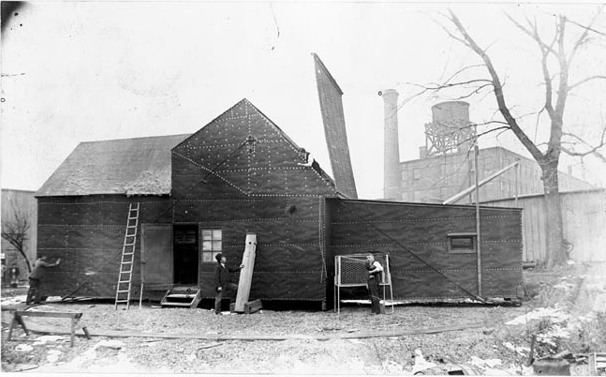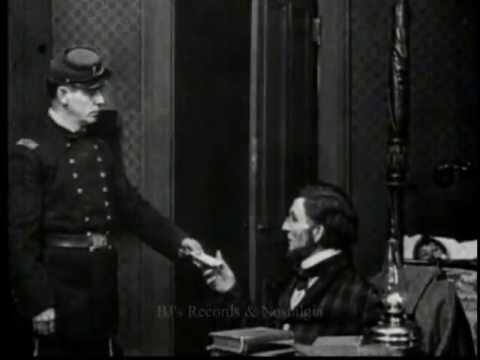Along with his many other inventions, Thomas Edison invented (or at least marketed) motion picture cameras and films. I cover the history of the inventions in my book, Edison: The Inventor of the Modern World, but one fascinating aspect that most people may not be aware of is that Edison was the first movie mogul.

The first experimental films were shot in the West Orange laboratory, but as motion pictures gradually became more professional, Edison needed a professional studio in which to film. In December 1892, construction began behind Building 4 on a studio that Edison later remembered as “a ghastly proposition for a stranger daring enough to brave its mysteries.” Covered in black tar paper inside and out, it was dubbed the Black Maria after the slang term for the police paddy wagons of the day it resembled. Not coincidentally, it looked like Marey’s “barnlike studio” Edison had seen during his 1889 visit:
“It obeys no architectural rules, embraces no conventional materials, and follows no accepted schemes of color,” boasted the sometimes flamboyant Dickson of the Black Maria. He did admit it had “a weird and semi-nautical appearance.”
The Black Maria was a “fifty-by-eighteen-foot wood building with a twenty-one-foot-high pitched roof.” It also had two rather unique features. The first was the roof: “Half of the roof could be raised or lowered like a drawbridge by means of ropes, pulleys and weights, so that the sunlight could strike squarely on the space before the machine [i.e., the motion picture camera].” The studio had to allow in sunlight, even though it was outfitted with electricity; Edison’s incandescent bulbs were not bright enough for filmmaking, and arc lighting was too harsh. This need for light led to the second odd feature: The whole building was mounted “on a graphite pivot that allowed the staff to turn the studio on a wood track.” As the sun arced across the sky during the day, they simply turned the building to keep pace. Edison wistfully noted in later years how the building could “turn like a ship in a gale.”

Using this odd studio, Edison’s team – led by William K. L. Dickson, a natural showman – created thousands of films. Most were short; Fred Ott’s Sneeze was all of 5 seconds long. But eventually they grew to longer, though “longer” meant 10 minutes for The Great Train Robbery and 15 minutes for The Life of Abraham Lincoln.
Motion pictures quickly became a huge money maker for Edison, but just as quickly dropped off in value as competitors focused on longer movies while Edison was distracted by his many other endeavors.
]The above is adapted from Edison: The Inventor of the Modern World, in Barnes and Noble stores and online now. Read more about Thomas Edison and the book by clicking here.]
David J. Kent is the author of Lincoln: The Man Who Saved America, now available. His previous books include Tesla: The Wizard of Electricity and Edison: The Inventor of the Modern World (both Fall River Press). He has also written two e-books: Nikola Tesla: Renewable Energy Ahead of Its Time and Abraham Lincoln and Nikola Tesla: Connected by Fate.
Check out my Goodreads author page. While you’re at it, “Like” my Facebook author page for more updates!
Follow me by subscribing by email on the home page. Share with your friends using the buttons below.










